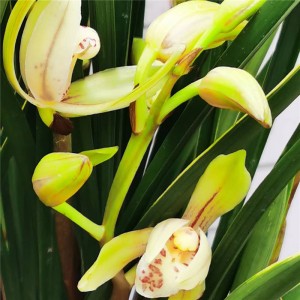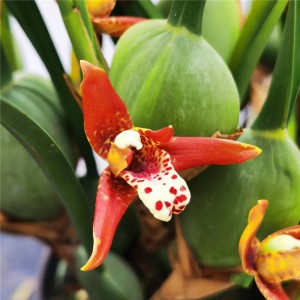Chinese Orchid
-

Chinese Cymbidium -Golden Needle
It belongs to Cymbidium ensifolium, with upright and rigid leaves.A lovely Asian Cymbidium with a wide distribution, coming from Japan, China, Vietnam , Cambodia, Laos, Hong Kong to Sumatra and Java. Unlike many others in the subgenus jensoa, this variety grows and flowers in intermediate to warm conditions, and blooms in the summer to fall months. The fragrance is quite elegant, and must be smelled as it is hard to describe! Compact in size with lovely grass blade-like foliage. It is a distinctive variety in Cymbidium ensifolium, with peach red flowers and fresh and dry fragrance.
-

Chinese Cymbidium -Jinqi
It belongs to the Cymbidium ensifolium, the four-season orchid, is a species of orchid, also known as the golden-thread orchid, spring orchid, burned-apex orchid and rock orchid. It is an older flowers variety. The color of the flower is reddish. It has a variety of flower buds,and the edges of leaves are rimmed with gold and flowers are butterfly shaped. It is the representative of Cymbidium ensifolium. The new buds of its leaves are peach red, and grow gradually into emerald green over time.
-

Smell Orchid-Maxillaria Tenuifolia
Maxillaria tenuifolia, the delicate-leafed maxillaria or coconut pie orchid reported by Orchidaceae as an accepted name in the genus Haraella (family Orchidaceae). It seems ordinary, but its enchanting fragrance has attracted many people. The flowering period is from spring to summer, and it opens once a year. Flower life is 15 to 20 days. coconut pie orchid prefer high-temperature and humid climate for light, so they need strong scattered light, but remember do not to direct strong light to ensure sufficient sunshine. In summer, they need to avoid strong direct light at noon, or they can breed in a semi open and semi ventilated state. But it also has certain cold resistance and drought resistance. The annual growth temperature is 15-30 ℃, and the minimum temperature in winter cannot be lower than 5 ℃.


